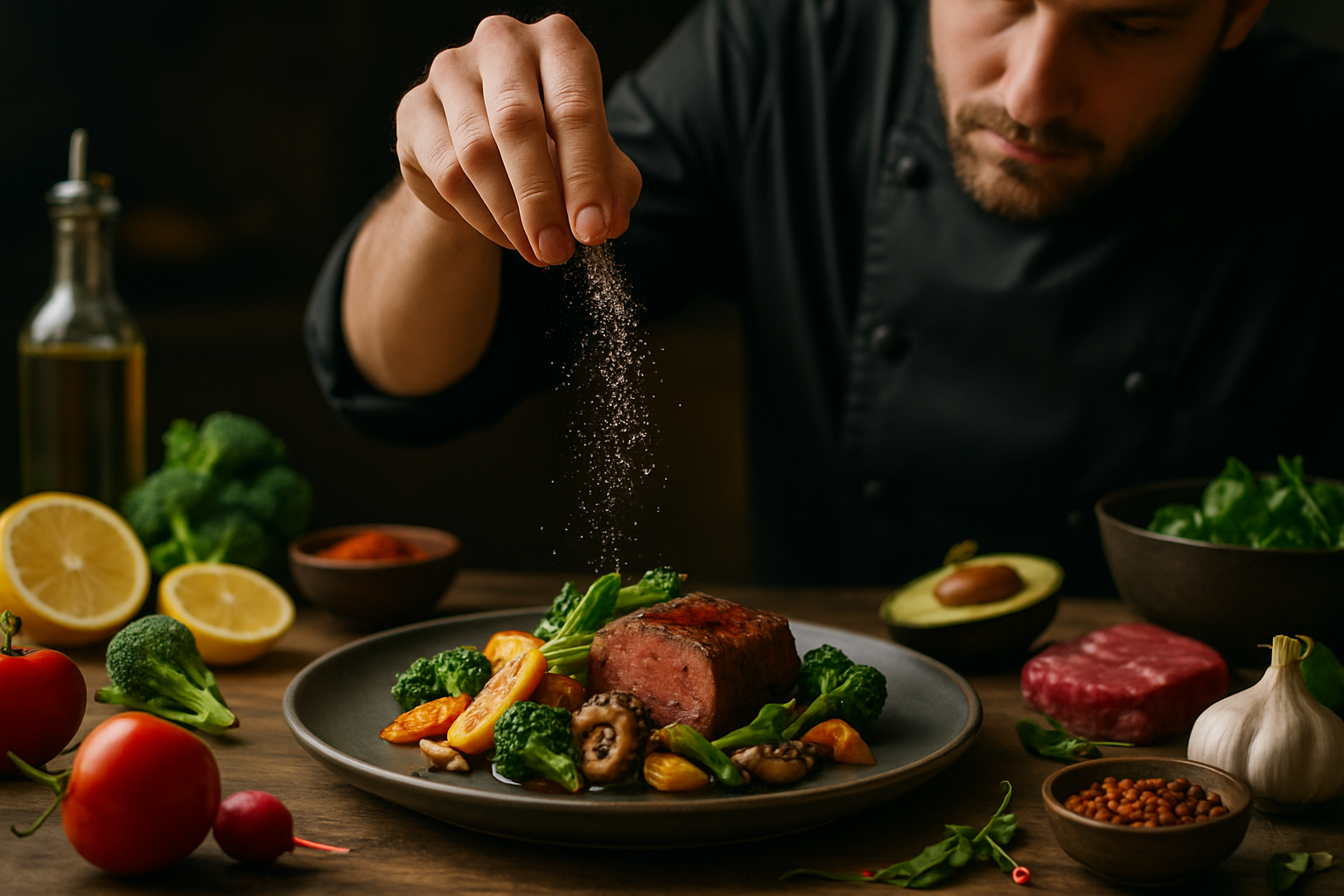Culinary Alchemy: Transforming Everyday Ingredients
Discover the art of culinary alchemy, where ordinary ingredients become extraordinary dishes. This innovative approach to cooking blends creativity, science, and tradition to elevate simple foods into gourmet experiences. From transforming humble vegetables into decadent desserts to turning kitchen scraps into flavor-packed broths, culinary alchemy opens up a world of possibilities for home cooks and professional chefs alike.

Understanding the molecular structure of foods also allows for creative pairings that might seem counterintuitive at first. For example, the compound methylpyrazine is found in both coffee and roasted meat, explaining why coffee-rubbed steaks have become a popular fusion dish. Similarly, the sulfur compounds present in both chocolate and garlic make them surprisingly compatible in savory dishes. By exploring these molecular connections, culinary alchemists can create unexpected yet harmonious flavor combinations.
Texture Metamorphosis: From Solid to Foam
One of the most visually striking aspects of culinary alchemy is the ability to transform the texture of ingredients. Foams, gels, and spherifications have become hallmarks of modern gastronomy, allowing chefs to present familiar flavors in unfamiliar forms. For instance, a simple carrot can be transformed into a light, airy foam that retains its essential flavor while completely altering its mouthfeel.
This texture metamorphosis is achieved through various techniques, such as using stabilizers like lecithin or xanthan gum, or employing specialized equipment like siphons and immersion blenders. The result is a playful approach to dining that challenges diners’ expectations and engages multiple senses. A dish of “olive oil caviar” might burst in the mouth, releasing a flood of flavor, while a “spaghetti” made from vegetables offers a low-carb alternative that maintains the satisfying texture of pasta.
Upcycling Ingredients: From Waste to Taste
Culinary alchemy also embraces sustainability by finding creative uses for parts of ingredients that might otherwise be discarded. This “nose-to-tail” or “root-to-stem” approach not only reduces food waste but often results in surprisingly delicious creations. Vegetable peels can be dehydrated and ground into flavor-packed powders, while fruit cores and rinds can be transformed into tangy vinegars or sweet preserves.
One innovative example is the use of aquafaba, the liquid from canned chickpeas, as a vegan egg white substitute. This once-discarded brine can be whipped into meringues, used as a binder in baking, or even transformed into a foam for cocktails. Similarly, spent coffee grounds can be incorporated into rubs for meats or used to infuse syrups for desserts, adding depth and complexity to dishes while reducing waste.
Fermentation: Nature’s Flavor Alchemy
Fermentation is perhaps the oldest form of culinary alchemy, harnessing the power of microorganisms to transform ingredients. This process not only preserves food but also creates complex flavors and enhances nutritional value. From the tangy kick of sourdough bread to the umami richness of aged cheeses, fermented foods offer a depth of flavor that cannot be replicated through other cooking methods.
Modern chefs are pushing the boundaries of fermentation, experimenting with unconventional ingredients and techniques. Lacto-fermented fruits create unique condiments with a balance of sweetness and acidity, while koji fermentation, traditionally used in Japanese cuisine, is being applied to Western ingredients to create new flavor profiles. These techniques allow chefs to create house-made vinegars, misos, and other fermented products that add a signature touch to their dishes.
Sensory Illusions: Tricking the Palate
The final frontier of culinary alchemy involves creating sensory illusions that challenge diners’ perceptions of taste and texture. This can involve visual trickery, such as creating a “fried egg” from mango and yogurt, or playing with temperature contrasts, like serving a “hot” ice cream that’s actually frozen on the outside but melts into a warm sauce when cut open.
Flavor illusions are equally intriguing, with chefs using techniques like flavor pairing and aroma diffusion to create dishes that taste different from what they appear to be. A classic example is Heston Blumenthal’s “Sound of the Sea” dish, which combines seafood with edible “sand” made from tapioca maltodextrin, served alongside an iPod playing ocean sounds. This multisensory approach demonstrates how culinary alchemy can engage not just taste and smell, but all of the senses to create a truly immersive dining experience.
Culinary Alchemy Tips & Facts
• The Maillard reaction occurs between 140°C and 165°C (284°F to 329°F) and is responsible for the brown color and complex flavors in seared meats and toasted bread.
• Spherification, a technique popularized by molecular gastronomy, uses sodium alginate and calcium chloride to create caviar-like spheres of liquid.
• Aquafaba can replace egg whites in many recipes, using about 3 tablespoons of aquafaba for each egg white.
• Koji, a type of mold used in Japanese fermentation, can break down proteins in meat, creating a natural dry-aging effect in just 48 hours.
• The perception of flavor is influenced by all five senses, with smell accounting for up to 80% of what we taste.
Culinary alchemy represents the cutting edge of gastronomy, where science, art, and tradition converge to create new and exciting dining experiences. By understanding the principles behind these transformations, home cooks and professional chefs alike can push the boundaries of what’s possible in the kitchen. Whether it’s turning a humble vegetable into a show-stopping dish or creating a sensory illusion that challenges diners’ perceptions, culinary alchemy opens up a world of possibilities for those willing to experiment and explore. As we continue to innovate in the kitchen, the line between cook and alchemist becomes increasingly blurred, promising a future of culinary experiences limited only by our imagination.





